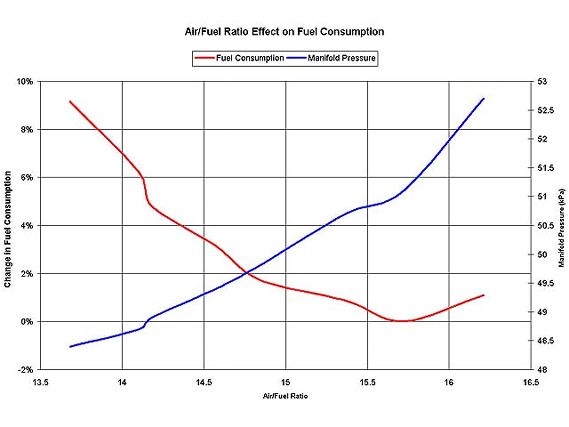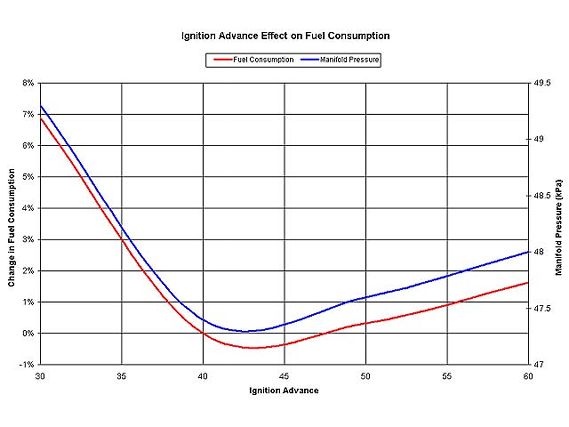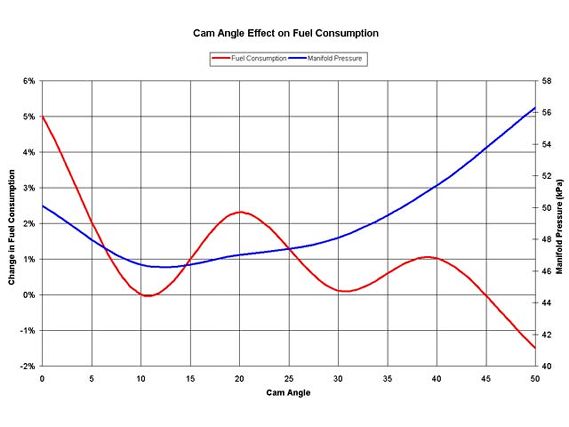Usually you'll only modify your engine's computer to achieve higher engine output, but with recent gas prices it's worth looking at your ECU to see what kind of gains in economy you can get. Since the ECU controls fuel and ignition events (as well as cam timing for the K-Series engine), we can optimize these engine parameters in order to maximize fuel economy and power.
There are, however, a great many factors which affect fuel economy, including vehicle size, shape, drag, rolling resistance, engine efficiency, engine size, gasoline composition, driving patterns, driving style, and even the time of year, so ECU tuning is not a silver bullet when it comes to fuel consumption. Small efficiencies, however, do add up.
Tools
We used an RSX to get an idea of the optimum ECU settings for economy. A common way to get a rough idea of fuel economy is to use a pressure gauge to monitor manifold pressure while driving. The lower the manifold pressure (or the higher the manifold vacuum), the less fuel is consumed. Manifold pressure only gives an approximation of economy however, and we decided to use a more controlled environment for measurement.
We placed the RSX on a Dynapack chassis dyno set to a constant load, equating to the approximate load of the RSX cruising at 65 mph in top gear (about 50 kPa manifold pressure or approximately 15 inches manifold vacuum). On the dyno, we ran the engine at the matching rpm (3000) and the fuel consumption was measured and averaged over a time period.
It must be emphasized that every car is slightly different, even for the same make and model. The test results for this vehicle may not necessarily apply to every other vehicle, every other Honda or even a Honda with the same engine and setup. It should also be noted that there are significant differences in fuel, both worldwide, from state to state within the US, and from summer to winter.
Air/fuel ratio
Because of the requirements of a three-way catalyst, almost all vehicles run as close to stoichiometric as possible at light and medium load. Stoichiometric is the 'chemically correct' ratio involving the complete combination of all the fuel with oxygen from the air. We can guess that running a leaner air/fuel mixture will result in less fuel consumption, but there are several factors against doing this.
First, the actual fuel savings are fairly slight. Secondly, the catalyst will not reduce nitrogen oxides efficiently with a mixture leaner than stoichiometric. Lastly, the combustion and exhaust gas temperature increases to the point where it may damage the engine.
 | Tuning for Fuel Economy
| Tuning for Fuel Economy This graph shows relative fuel consumption and manifold pressure versus air/fuel ratio. Note that the manifold pressure increases as the air/fuel ratio is made leaner. To obtain the same power output with a leaner mixture, you have to use more throttle. Generally, fuel consumption decreases as the mixture is made leaner. Eventually the increase in manifold pressure offsets the reduction in fuel flow and fuel consumption increases once the mixture is leaned past 15.7:1.
At the stoichiometric air/fuel ratio, fuel consumption is around two percent higher than optimum. Air/fuel ratios richer than stoichiometric sharply increase fuel consumption so that running 13.5:1 results in eight percent more fuel consumption than stoichiometric. This is why it's important to have a correctly functioning oxygen sensor.
Timing
Ignition timing is also subject to restrictions from both catalyst requirements and engine longevity. Decreasing ignition timing results in lower combustion gas temperature but also raises exhaust gas temperature. On the other hand, increasing ignition timing lowers exhaust gas temperature, but eventually gets into the realm of pinging. Extremes either way also run the risk of misfiring and incomplete combustion.
 | Tuning for Fuel Economy
| Tuning for Fuel Economy This graph shows relative fuel consumption and manifold pressure versus air/fuel ratio. In this case, both manifold pressure and relative fuel consumption react in the same way to changes in ignition timing. The optimum timing is in the low to mid 40 degree range, with a much steeper increase in fuel consumption from too little timing compared to too much timing. For reference, the stock ECU runs 47 degrees timing at this load, which is close to optimum.
Cam angle
With the Honda K-series engine, the intake cam angle can be varied for both maximum power and, in our case, to reach maximum economy. Unlike the ignition timing and air/fuel ratio, cam timing is not subject to restrictions for emissions or engine longevity reasons.
 | Tuning for Fuel Economy
| Tuning for Fuel Economy This graph shows relative fuel consumption and manifold pressure versus intake camshaft angle (in crank degrees). The results of this test were not as predicted. The manifold pressure responds to cam angle be decreasing from full retard (0 degrees), reaching a minimum pressure at around 15 degrees and then slowly increasing as the cam reaches full advance (50 degrees).
Fuel consumption, however, does not follow the same curve as the manifold pressure. Full retard results in the most fuel consumption and full advance appears to have the least fuel consumption. But for everything else, there isn't a smooth relationship between cam angle and fuel consumption. We believe that this is from standing waves on both the intake and exhaust side creating differences in the way the engine runs.
It's also possible that in this case high manifold pressure doesn't necessarily mean that fuel consumption increases. Higher manifold pressures require wider throttle openings, which can reduce pumping losses for the engine. The bad news is that it's also certain that these results are fairly specific to the exhaust setup on the test vehicle. More than likely every other vehicle will be slightly different.
Conclusions
In our case, we could make up gains of around two percent with fine tuning and cam timing. The factory settings were not too bad. If we could run the engine at 15.7:1 air/fuel ratio, we could realize about two percent (as outlined above however, we don't feel that this is a good idea). There might be additional gains in areas where we did not make measurements (cold start air/fuel ratio, for instance).
Is it possible to tune the ECU both for economy and maximum power? Certainly. This is a point of common misconception. Since the ECU uses different areas of the fuel, ignition and cam angle tables, it's possible to run different settings for normal running and full power.
Driving for Economy
Correct maintenance is important. Make sure the oxygen sensor is working correctly. This is the single most important item to check. Check your engine oil type, as using heavier oil than recommended reduces fuel economy. And always stay on top of tire pressures. Under inflated tires greatly increase fuel consumption.
But the biggest payoff in fuel consumption is driving style. Driving with a steady throttle opening can make a 10-20 percent difference in economy, especially on the freeway. If you can datalog the ECU sensors, try graphing the manifold pressure over time. If the line is wavy, consider using the cruise control function more (if your car is so equipped).
Also, shift as early as practical while accelerating (about 2500-3000 rpm for most vehicles) and use the highest possible gear while coasting or cruising. Warming the engine up before driving wastes fuel, and causes more wear as the engine spends a longer time period cold. Similarly, long periods of idling increase fuel consumption.
It may be worth your while to measure fuel consumption versus vehicle speed to find optimum cruising speed. The optimum cruising speed is a function of vehicle aerodynamics, gearing and engine characteristics, but generally will be anywhere from 45-65 mph for a modern vehicle. Trucks and other blunt objects will have optimum speeds much lower than this, but who can afford to drive a truck nowadays anyway?
Thanks go out to Church Automotive Testing in Torrance, Calif., for use of the dyno.
